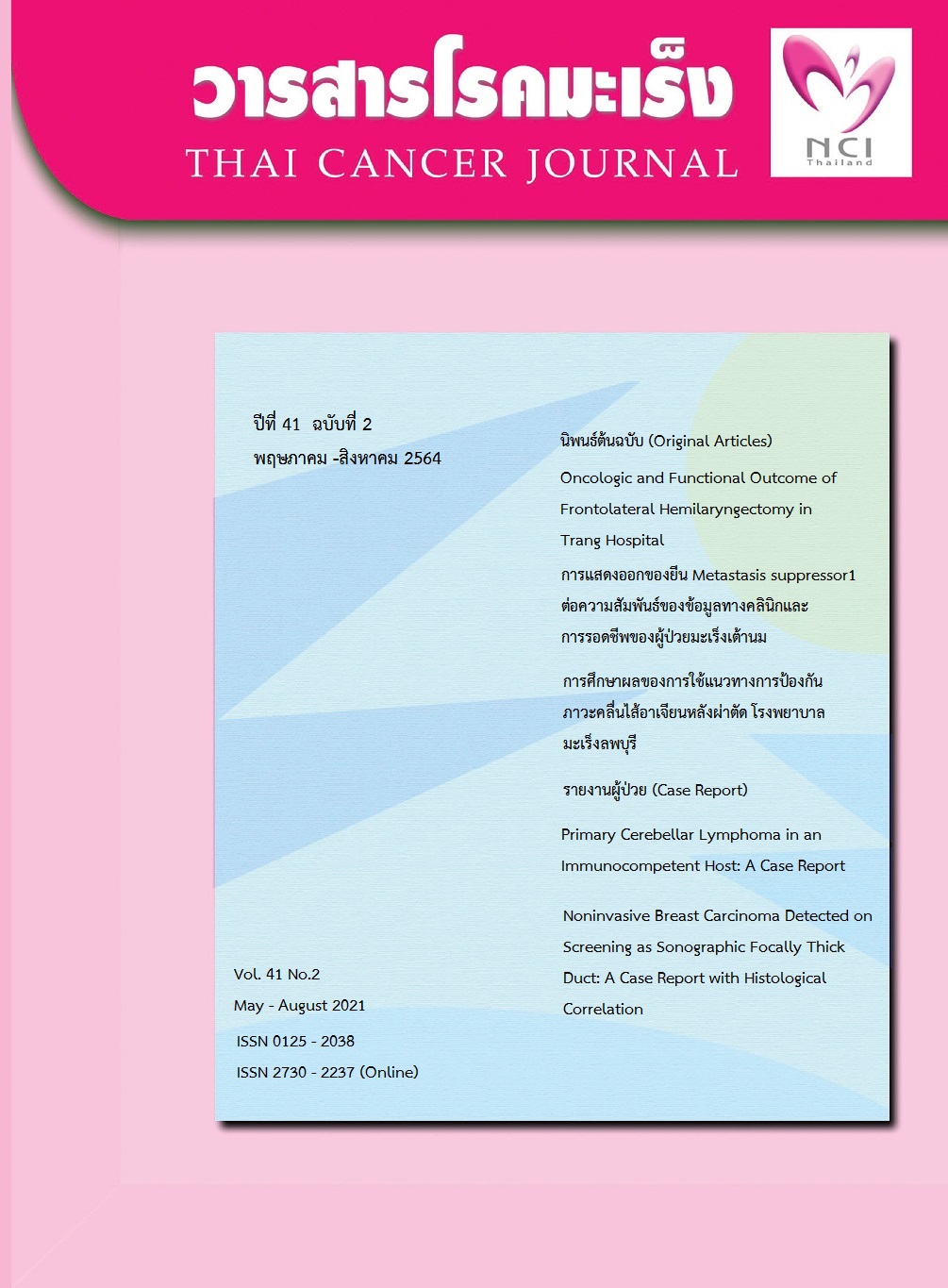Noninvasive Breast Carcinoma Detected on Screening as Sonographic Focally Thick Duct: A Case Report with Histological Correlation
Keywords:
DCIS, ductal carcinoma in situ, focally thick duct, ductal changes, breast, sonography, ultrasound, fine needle aspiration, FNAAbstract
Most non-invasive breast carcinoma or ductal carcinoma in situ (DCIS) of the breast is detected by imaging on screening. It is usually viewed as fine, linear, and pleomorphic mi cro-calcification in mammography. The sonographic feature of DCIS is not established in the BI-RADS synopsis. The authors report a case of DCIS that was operated due to a focally thick duct with two branching on ultrasound images and malignant cells revealed in aspiration bi opsy cytology.The abnormality was noted in the upper outer quadrant of her left breast. She was 64 years old at the onset. Left mastectomy was done, and histopathology proved that the focally thick duct image was DCIS of high grade. The patient had an uneventful consequence and doing well until present at the time of report for more than four years. The taken messages are as follows. Non-invasive breast carcinoma could manifest primarily as focally thick duct lesions by sonography. When aspiration biopsy cytology found malignant cells from a thickened duct lesion, DCIS entered the differential diagnosis. By correlation between ultra sound imag-ing and histology, a branching duct in imaging is an array of several non-invasive duct struc-tures placed in fibrous band-like tissue, not a single neoplastic duct with the length wise lumen and thick wall. Finally, breast ultrasonography is necessary for breast cancer screenings, mainly to visualize ductal features, since mammograms and other modalities cannot demonstrate the morphology of thickened ducts.
References
Schnitt SJ, Collins LC. Intraductal Prolifera-tive Lesions: Usual Ductal Hyperplasia, Atypical Ductal Hyperplasia, and Ductal Carcinoma in Situ. Biopsy interpretation of the breast. Philadelphia: Wolters Kluwer Health/Lippincott Wil-liams & Wilkins; 2013. p. 69-93.
D'Orsi CJ. Imaging for the diagnosis and management of ductal carcinoma in situ. J Natl Cancer Inst Monogr. 2010;41:214-7.
Ferris-James DM, Iuanow E, Mehta TS, Shaheen RM, Slanetz PJ. Imaging Approaches to Diagnosis and Management of Common Ductal Abnormalities. RadioGraphics 2012;32:1009-30.
Watanabe T, Yamaguchi T, Tsunoda H, Kaoku S, Tohno E, Yasuda H, et al. Ultrasound Image Classification of Ductal Carcinoma In Situ (DCIS) of the Breast: Analysis of 705 DCIS Lesions. Ultrasound Med Biol 2017;43:918-25.
Boonjunwetwat D, Chyutipraiwan U, Sam-patanukul P, Chatamra K. Sensitivity of mammography and ultrasonography on detecting abnormal findings of ductal carcinoma in situ. J Med Assoc Thai 2007;90:539-45.
Sampatanukul P, Boonjunwetwat D, Thanakit V, Pak-Art P. Integrated criteria of fine-needle aspiration cytology and radiological imaging for verification of breast cancer in nonpalpable lesions.J Med Assoc Thai 2006;89:236-41.
Downloads
Published
Issue
Section
License
บทความทีตีพิมพ์ในวารสารโรคมะเร็งนี้ถือว่าเป็นลิขสิทธิ์ของมูลนิธิสถาบันมะเร็งแห่งชาติ และผลงานวิชาการหรือวิจัยของคณะผู้เขียน ไม่ใช่ความคิดเห็นของบรรณาธิการหรือผู้จัดทํา







